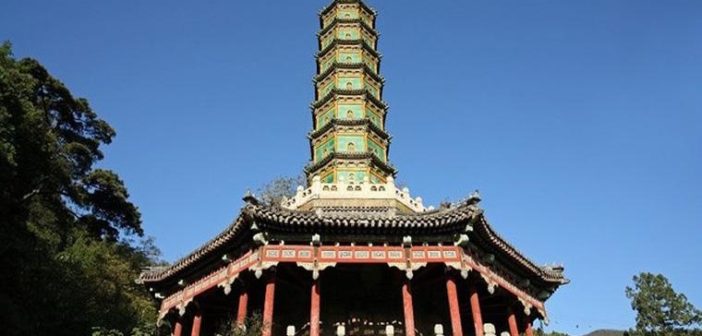
Every autumn, hordes of eager tourists descend upon Fragrant Hills (Xiangshan) Park to take in the blushing maple, smoke, and sweet gum trees. Take heart: there’s plenty to see in the park’s 395 acres besides Incense Burner Peak (Xianglu Feng), named for two rocky outcroppings that (very) vaguely resemble incense burners. Lace up your hiking shoes and head to the northwest of Beijing to explore the various temples, pavilions, and lakes. For a more rewarding experience, drop in on a weekday to avoid the swarms of visitors.

Kick start your day by heading to the Fragrant Hills branch of Sculpting in Time Cafe (1). This airy coffeehouse offers soups, sandwiches, pastas,
salads, breakfast, and coffee. The blonde wood accents, billowing white drapes, and roaming cats come straight out of a vacation postcard. Take your cup of joe to the second floor patio for an expansive view of the mountains.

Enter through the East Gate (2) of Fragrant Hills Park. There, a path branches out into two major routes: north and south. The southern path, which snakes through the park, is more challenging as it ends in a two-hour hike to the peak, Xianglu Feng. Along the way, visitors can see Shuangqing Villa (Mao Zedong’s former residence) and the ruins of Fragrant Hills Temple.
The northern path leads to the Chairlift Station (3) and is better suited to families with strollers or small children. There’s a Chinese restaurant called Songling Canting on the way up; otherwise, the park’s numerous food stalls sell the usual fangbian mian and soft drinks. Zhao Miao, or Bright Temple, the park’s Tibetan-style lamasery, is currently closed for repairs.

Be forewarned: the RMB 50 price tag is good for one way up the chairlift only. Once you ascend the 557m to Xianglu Feng, you’ll either have to fork out another 50 kuai or walk down. That said, the views from the chairlift are breathtaking. On a clear day, you can see all across Fragrant Hills’ western slope and beyond to Beijing’s skyline.
Here is more about what to expect.
Photos: Sijia Chen




